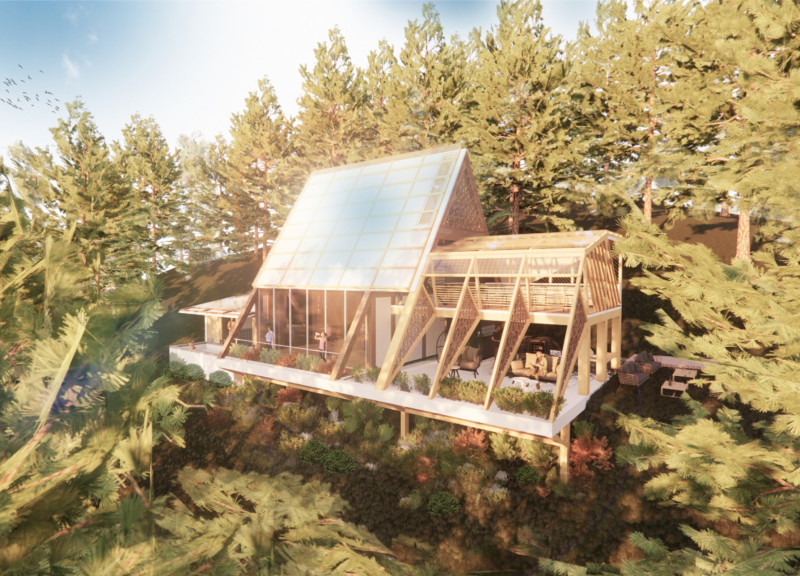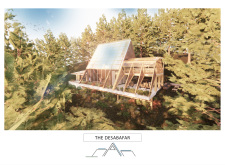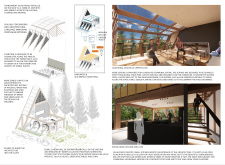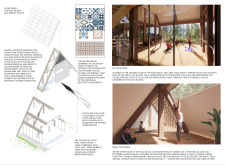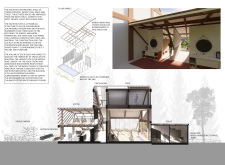5 key facts about this project
The Desabafar is an architectural endeavor that reflects a balance between sustainability, functionality, and community engagement. Set within a natural landscape, the design serves various functions, providing energy-efficient living spaces while encouraging connections among inhabitants. The concept emphasizes harmony with the environment through a modern approach to traditional design elements, influencing both form and use.
Design Concept
Transparent solar panels cover the roof, demonstrating a commitment to renewable energy. These panels not only meet the needs for lighting, cooking, and heating but also add an aesthetic quality to the structure. The inclusion of sun jali for shading recalls Portuguese architectural styles, allowing light to filter in and create engaging patterns within the spaces while limiting heat gain.
Vegetation Integration
The design carefully considers the relationship between furniture and the architecture itself. Specially designed furniture supports the growth of creeper plants, which enhances the environment while promoting urban agriculture. This approach blends the indoor and outdoor spaces, showcasing the potential for self-sufficiency in an urban setting.
Community Spaces
The layout features open communal areas that facilitate interaction. The kitchen and eating area invite conversation and socializing, with plenty of natural ventilation and views of the landscape promoting a welcoming atmosphere. The central staircase acts as a transition point, separating the dining space from the yoga studios, encouraging movement and engagement.
Natural Light and Perspective
The large yoga space on the ground floor is defined by extensive windows that offer clear views of the outdoors, drawing in natural light. This design choice enhances the experience of being in the space and connects users to the natural surroundings. Meanwhile, the upper-level yoga room features intricate jali designs that create captivating shadows, contributing to a serene environment suitable for meditation and reflection.


